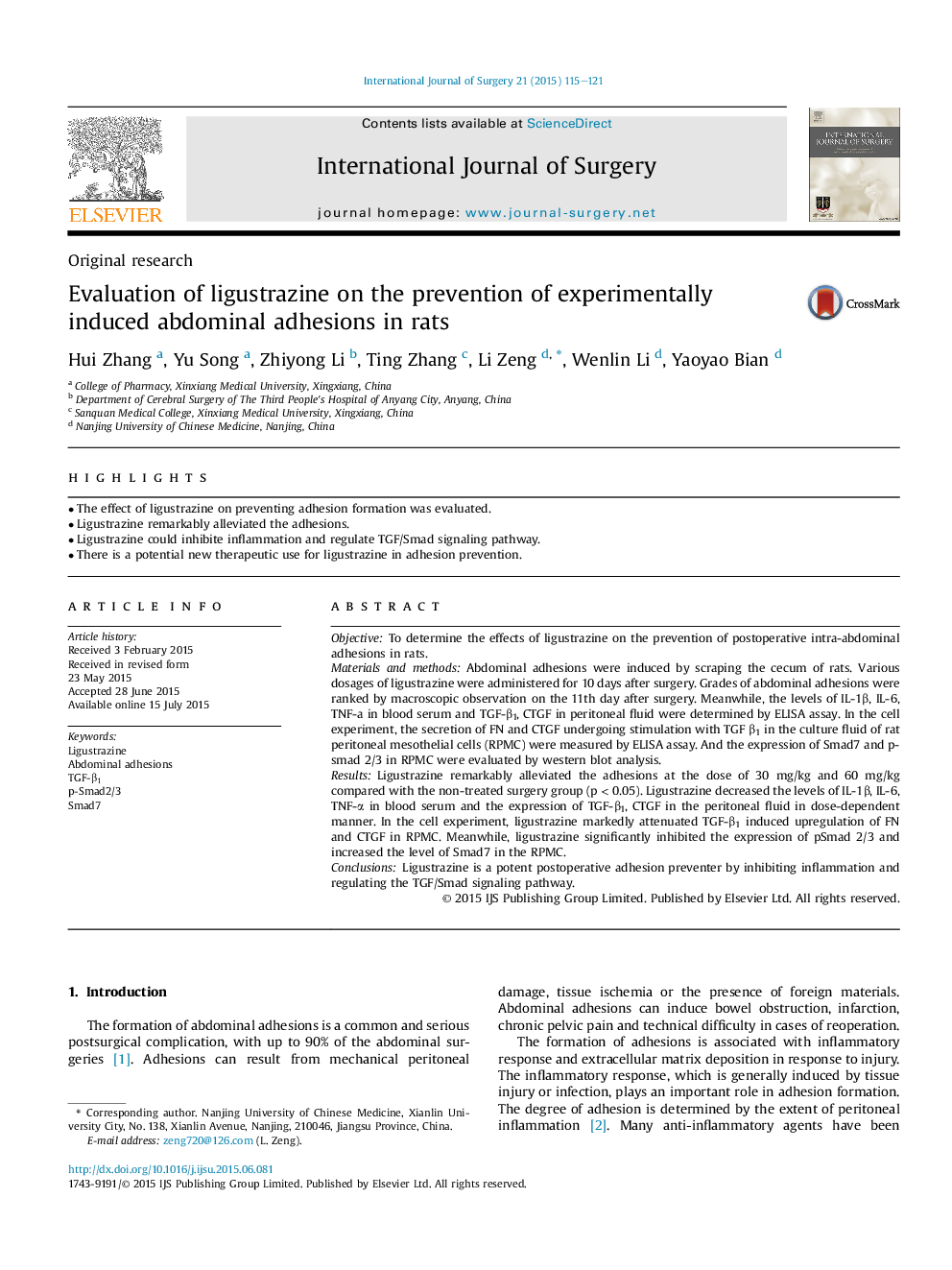| Article ID | Journal | Published Year | Pages | File Type |
|---|---|---|---|---|
| 6250947 | International Journal of Surgery | 2015 | 7 Pages |
â¢The effect of ligustrazine on preventing adhesion formation was evaluated.â¢Ligustrazine remarkably alleviated the adhesions.â¢Ligustrazine could inhibite inflammation and regulate TGF/Smad signaling pathway.â¢There is a potential new therapeutic use for ligustrazine in adhesion prevention.
ObjectiveTo determine the effects of ligustrazine on the prevention of postoperative intra-abdominal adhesions in rats.Materials and methodsAbdominal adhesions were induced by scraping the cecum of rats. Various dosages of ligustrazine were administered for 10 days after surgery. Grades of abdominal adhesions were ranked by macroscopic observation on the 11th day after surgery. Meanwhile, the levels of IL-1β, IL-6, TNF-a in blood serum and TGF-β1, CTGF in peritoneal fluid were determined by ELISA assay. In the cell experiment, the secretion of FN and CTGF undergoing stimulation with TGF β1 in the culture fluid of rat peritoneal mesothelial cells (RPMC) were measured by ELISA assay. And the expression of Smad7 and p-smad 2/3 in RPMC were evaluated by western blot analysis.ResultsLigustrazine remarkably alleviated the adhesions at the dose of 30 mg/kg and 60 mg/kg compared with the non-treated surgery group (p < 0.05). Ligustrazine decreased the levels of IL-1β, IL-6, TNF-α in blood serum and the expression of TGF-β1, CTGF in the peritoneal fluid in dose-dependent manner. In the cell experiment, ligustrazine markedly attenuated TGF-β1 induced upregulation of FN and CTGF in RPMC. Meanwhile, ligustrazine significantly inhibited the expression of pSmad 2/3 and increased the level of Smad7 in the RPMC.ConclusionsLigustrazine is a potent postoperative adhesion preventer by inhibiting inflammation and regulating the TGF/Smad signaling pathway.
